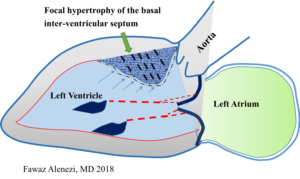What to look forward to at Vascular Discovery 2022
The primary goal of the Vascular Discovery: From Genes to Medicine Scientific Sessions is to provide a forum for the timely exchange of information about new and emerging scientific research in lipids and lipoproteins, arteriosclerosis, thrombosis, vascular biology, genomics, precision medicine, peripheral vascular disease, and vascular surgery.
This meeting is planned to kick-off on Thursday the 12th of May at 7:00 am with an early career round table discussion session moderated by Robert C. Bauer, PhD and Cynthia St. Hilaire PhD. It will be the perfect setting to discuss ideas, including starting your own lab, mentoring, project management and work-life integration with friendly faces around a hot cup of coffee.
After the conference opening, Vascular Discovery 2022 will officially launch with plenary session 1, which includes several concurrent sessions, each covering novel concepts of atherosclerosis. The new discoveries related to inflammation and atherosclerosis will be presented during a packed oral abstract presentations session including the role of autophagy in foam cells as well as the link between plasma cholesterol and the chromatin landscape of bone marrow monocytes. In parallel, another session will be running for those interested in listening to the new research related to the cellular biology of the vessel wall. These topics were launched by a presentation by Jiliang Zhou, MD, PhD about the discovery of long non-coding RNA CARMN and smooth muscle cells. Some of the exciting topics which will be covered during this session are related to the interplay between the endothelium and the inner vasculature. An exciting talk to look forward to is by Paul Cheng, MD, PhD from Stanford University, about the human arterial cell atlas. Discussions on the interplay between COVID-19 and thrombosis will also take place in a concurrent session.
After lunch, the day continues with presentations by the 2022 ATVB Journal Early Career Investigator Award recipients and followed by plenary session 2 with subjects covering lipid metabolism, vascular cells and thrombosis, or hot topics presented by the AHA Career Development Awardees. The day will end with a poster session and reception, which will be a great networking opportunity!
The second day of Vascular Discovery 2022 is also scheduled to start with a special session for Early Career Researchers specifically focused on perfecting your CV and motivation letter. Plenary session three will begin with the stimulating topic of the shapeshifters in the vascular disease, mostly focused on endothelial and smooth muscle cell plasticity, before dividing into three concurrent sessions which will handle various topics from novel therapeutic targets in atherosclerosis to the vascular effects of antithrombotic therapy as well as health disparities in peripheral vascular disease. Plenary session four will include the Page Junior Faculty Research Award Competition featuring exciting topics with a major interest in smooth muscle cells differentiation before splitting into concurrent sessions covering metabolic disorders, platelet production, signaling, and function, or polygenic risk scores for risk stratification. The Hot Off the Bench Oral Abstract Presentations will be a great way to meet the authors of the hottest research currently being done on vascular diseases.
The last day of Vascular Discovery 2022 will be highlighted by the plenary session 6 with a list of invited lecture series covering genomic aging in cardiovascular disease and cerebrovascular disease.
After meeting virtually for the past two years, Vascular Discovery 2022 will be an in-person meeting this year, reuniting us again to discuss our passion for science, form new collaborations, share experiences and finally see each other again after a long break.
Registration for the Vascular Discovery Conference is now open!
“The views, opinions, and positions expressed within this blog are those of the author(s) alone and do not represent those of the American Heart Association. The accuracy, completeness, and validity of any statements made within this article are not guaranteed. We accept no liability for any errors, omissions, or representations. The copyright of this content belongs to the author and any liability with regards to infringement of intellectual property rights remains with them. The Early Career Voice blog is not intended to provide medical advice or treatment. Only your healthcare provider can provide that. The American Heart Association recommends that you consult your healthcare provider regarding your health matters. If you think you are having a heart attack, stroke, or another emergency, please call 911 immediately.”

